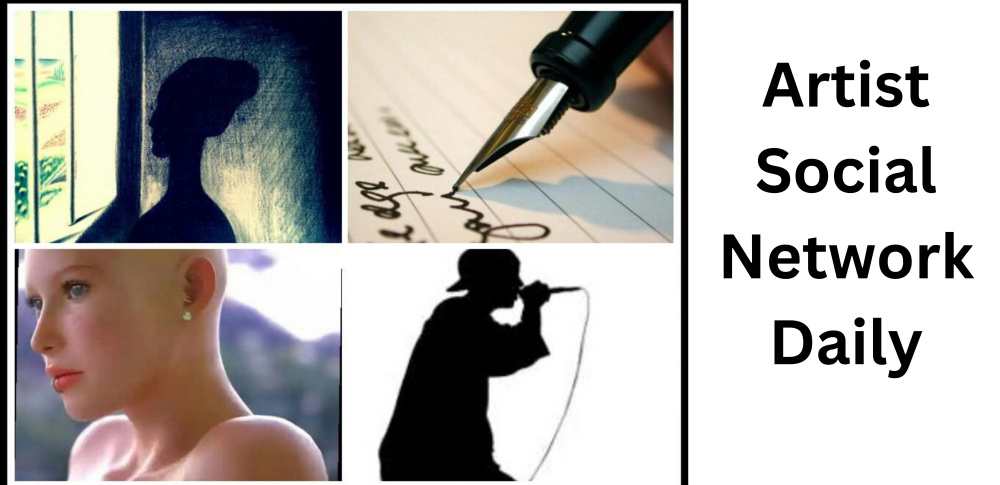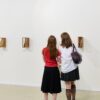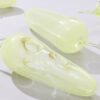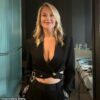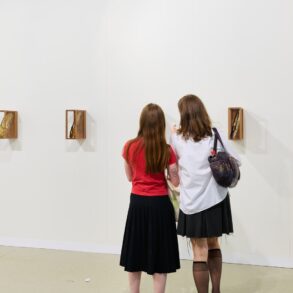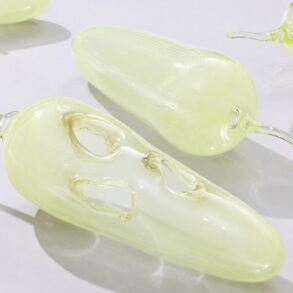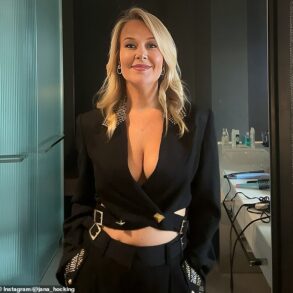Starting with Aviva Uri, Esther Peretz Arad, Anna Ticho, Leah Nikel, and Ruth Shlos, women have made their mark in the history of Israeli art.
Although the path for women has not been easy, the contemporary art scene in Israel is now dominated by female artists who differ in their forms of expression and media. Painters, sculptors, and multimedia artists; artists who refer to Jewish tradition in their work and those who create very universal art.
With International Women’s Day on March 8, I have chosen for this column female artists whose solo exhibitions have caught my attention and can be seen in Petah Tikva, Tel Aviv, and Bat Yam.
Three Israeli artists answered my three questions:
- What inspires you?
- What do you call art?
- What, in your opinion, makes your artwork different from that of other artists?
Carmit Hassine
Carmit Hassine was born in 1977 and grew up in Ahva, in the Shfela region of Israel. In her adult life, she spent five years in Italy, then moved to Tel Aviv, and eventually, at 32, settled in Moshav Michmoret, in central Israel, where she has been based ever since.
“I set up my studio in the backyard of my home. The biggest advantage of it is that it allows me to work at any hour, even at unconventional times,” Hassine told the Magazine. “I work nonstop. It’s my oxygen.”
Hassine has a BFA specializing in photography from Libera Accademia di Belle Arti, Florence, Italy (2006), and graduated from the Midrasha School of Art, Beit Berl Academic College, Israel (2018). Her work spans installation and sculpture in unconventional materials, including marble and graphite powder. Her sculptural works interpret body parts, corresponding with prostheses to extend the human body or mutate between organic and artificial forms.
Hassine’s work has been exhibited in several solo shows and numerous group exhibitions in Israel and overseas, such as the MUZA, Eretz Israel Museum, Tel Aviv; MOCAK Museum of Contemporary Art in Krakow, Poland; Bezalel Gallery for Contemporary Art; and the Liebling Haus in Tel Aviv. In 2005, she received first prize in photography at the Festival du Scoop in Angers, France, and a year later second prize in “Local Testimony” in Tel Aviv.
Additionally, she has been awarded grants from the Mifal Hapais Artist Greenhouse, the Tel Aviv Culture Department, the America-Israel Cultural Foundation, and the Rabinovich Foundation.
In her current solo exhibition, Singing over the Bones, at the Petach Tikva Museum of Art, Hassine presents sculptures that join the physical and the abstract. She combines three formal-material worlds: sculptural bodily volumes, industrial structures, and geological phenomena. The symbiotic relationship between body, machine, and nature repeatedly represents the body’s way of adapting and adjusting to a changing environment.
I experienced the show as pure in form, with intentionally chosen very modest artistic means. Walking among the sculptures, viewers can see them as nearly transparent. Yet, at the same time, the elements are very material; the artist seems to be quoting from classical sculptures of the human body’s elements.
Inspiration: “My inspiration stems from a broad perspective that allows for freedom and imagination. I draw from specific sensations that I seek to materialize. As part of my exploration of the body, I create a symbiosis that merges organic forms, industrial structures, and elements from nature.
“A significant part of my inspiration and curiosity comes from material research – the desire to understand the properties of the material and its raw form, such as graphite, charcoal, and marble powders. Additionally, my creative process is accompanied by research in medicine.”
Meaning of art: “For me, art is a layered language that engages the senses, addressing material, movement, and form in [their] relation to space and the body. Art is not presented as a mediated text; it maintains an enigma, unfolds associations, and invites an expanded interpretation.”
Hassine’s art: “I believe that the blend that shaped the DNA of my work comes from the influences I absorbed during my studies in Italy, alongside classical sculpture; and in Israel, where the emphasis was on content and contemporary discourse.
“My work combines meticulous handcraft with a classical yet contemporary presence, conceptual depth, and unique materiality. I sculpt in clay before casting custom material compositions, preserving the movement of the hand in hard materials like marble.”
carmithassine.co.il
Alma Gershuni
Born in Tel Aviv in 1996 and based there ever since, Alma Gershuni recently opened her first solo exhibition, Sight of the Eyes, at the city’s Rothschild Fine Art. She studied art at Thelma Yellin High School and the Hatahana School of Painting. Her work has been exhibited in group and duo shows in Israel and abroad.
Gershuni is the third generation of artists in her family. She said that she was practically born with a paintbrush in her hand, recalling that at age one and a half, she was already painting with a brush on canvas in her father’s (Aram) studio – “simple childish things, but on canvas, not on paper.” She grew up surrounded by art.
Her first solo exhibition, by coincidence, is taking place in the same building where her grandfather, Moshe Gershuni, had his art studio.
Gershuni specializes in classical figurative painting, capturing portraits, especially female figures, elements of the human body, landscapes, and classical still life. Her colors are deep and very realistic, with rich textures.
She chose oil as her medium and is faithful to the old painting traditions. “Oil is the most classic medium, and it speaks to me,” she said, adding, “I draw a lot of inspiration from the paintings of the great old masters and try to discover and understand their techniques and how they connect with me and the world today. I focus on traditional oil painting on wood, working from direct observation in natural light.”
In Sight of the Eyes, Gershuni presents paintings mostly from the last two years. Her models are mainly those with whom she had previously established relationships: friends, relatives, and her students. However, the exhibition also includes a painting of an “unknown” beautiful nude Israeli Ethiopian woman who contacted Gershuni and asked the artist to paint her.
Inspiration: “I find inspiration in many places, but most often, human emotion, personal experiences, and encounters spark my creativity. I enjoy exploring the way light, color, and texture can evoke different feelings and tell stories. The subtleties of the natural world inspire me, as well as the abstract moments when you forget you know what you are looking for.”
Meaning of art: “To me, art is a form of expression of something deeper than words can convey. It’s about capturing emotions, thoughts, and ideas differently, and it’s a form of communication with others, but mostly with myself.”
Gershuni’s art: “I think my artwork is very personal. When I paint portraits, for example, I get to know the person deeply, and I can see him or her very clearly and genuinely. It’s always a special moment.
– “In my artwork, I try not to tell any absolute truth or a clear story. I want to invite the viewers into a moment of reflection, to engage with the piece visually and emotionally, allowing them to form their connection to the artwork and to draw any meaning they would like.”
www.almagershuni.com
Ester Schneider
Ester Schneider, a multimedia artist, was born in Moscow in 1978. A year and a half later, her family made aliyah and moved to Jerusalem. They came from a Communist country, but Schneider grew up in a Chabad household.
“My father [Prof. Michael Schneider, 1957-2020] became religious while still in Moscow. After making aliyah, he continued his studies at a yeshiva and developed into a scholar of Kabbalah and Jewish mysticism,” she recounted. Though she is not hassidic, her upbringing has a clear impact on her art. “I am very much into Kabbalah and hassidut. This is part of my inspiration, and I have a hassidic state of mind,” she said.
Schneider studied at the School of Art – Hamidrasha, Beit Berl Academic College, and Associates program, ALMA, Home for Hebrew Culture, Tel Aviv, and earned her MFA at the Bezalel Academy of Arts and Design (2009). She received numerous art awards, such as the Ministry of Culture Award for Visual Arts (2019).
Her works have been exhibited in Israel, Russia, the United States, and other countries, and are found in museums and private collections in Israel and abroad.
Schneider mainly works with painting and installation. “I started with drawings and watercolors on paper, and then expanded into paintings and sculptures.” Inspired by Jewish mysticism, Persian miniatures, and Russian modernism, Schneider deals with identity and faith, while creating visual and structural realms. Recurring motifs in her art are simple geometric shapes reminiscent of biblical sites (for example, Mount Sinai) and hair. Why hair? “Because the brush leaves the initial shape as hair,” she explained. Hair, when covered, is also a symbol of modesty in Judaism.
Now on view is her work Fountains in mixed media, 2022, as part of the exhibition Bella Brisel: Waters from Waters at the Tel Aviv Museum of Art, and her latest solo exhibition, Hoshana, which opened on March 20 at the Bat Yam Museum of Art. The exhibition occupies the entire museum. The title comes from the verse “Ana Hashem hoshia na” (Psalms 118:25).
Schneider explores in it the concept of Ohel Mo’ed – the Tent of Meeting that accompanied the Israelites on their desert journey – translating it into the context of our own domestic spaces, using furniture, objects, and elements to take the form of human-scale body parts. The artist invites us to interact with her installations; for a more inclusive experience, viewers can sit on cushions inside some of her sculptures.
Inspiration: “Inspiration is a state of mind. I find it in everyday life, such as house maintenance or being with my children. Every moment can be inspiring if I’m present in it. I find my family history inspiring. The repressed memories of my family’s origins are still alive in my current life. It springs out in art references such as Russian modernism and especially the Jewish modernists.
“For the last several months, I have been working in the Issachar Ber Ryback Museum. [The current exhibition, Hoshana, was primarily created at Ryback House by (Jewish-Ukrainian-French painter Issachar Ber Ryback, 1897-1935), which served as Schneider’s studio in recent months].
“His [Ryback’s] works came back from France to the museum, and seeing them reminded me how what he painted – the shtetls, the hard life of Jewish people, and pogroms – is relevant especially nowadays. We can feel it today, again. For me, it’s also the history of my ancestors, who lived those kinds of lives. So it is tragic and magical to me.
“The round and spiral form of the Bat Yam Museum also influenced the works in my show there. It resembles the eternal return, something both traditional and futuristic. My works combine ceremonial motifs from the synagogue and a simple apartment; they share the Hebrew word bayit [home].
“The weekly Torah portion read in a new way every year accompanies me at work, too. Mystic studies of many traditions draw a path in life and art.”
Meaning of art: “Art is a passion for life; this is part of my practice, a prayer, a playful laboratory of thoughts and feelings; it’s the opportunity to reveal or create the unknown parts of yourself. I share it when I feel that something happened there, that it can have its own life.”
Schneider’s art: “Maybe the exaggeration of colors. I know that every artist has a unique story and background, but my Russian, ultra-Orthodox, and Israeli background is not very common. The presence of these contradicting ideologies in many ways comes to life through different materials and mediums, and this dialogue with different traditions and cultures that in ‘real life’ do not coexist, synthetically and sometimes ironically is present in art.”
esterschneider.weebly.com/
This post was originally published on this site be sure to check out more of their content
